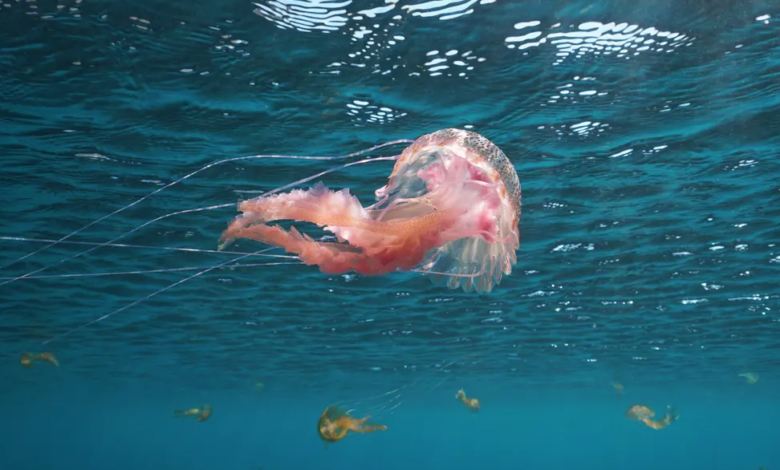First underwater robot cleaner in the shape of a jellyfish
To respect the fragility of the seabed, it is urgent to create a small and silent underwater robot cleaner
(sustainabilityenvironment.com) – In a few years, during a dive around the coral reef, you may encounter a jellyfish that collects waste on the seabed. It will not be yet another free support that mother nature offers to a humanity now bent to the disposable. Instead, it could be the latest invention by researchers at the Max Planck Institute in Stuttgart, who invented a hand-sized underwater robot cleaner.
Similar to a jellyfish, energy efficient and much quieter than its current relatives, the robot uses electro-hydraulic actuators through which electricity passes. The actuators function like artificial muscles that power the robot. Around these muscles are air cushions and soft, rigid components, which serve to stabilize the robot and make it waterproof. In this way, the high voltage that passes through the actuators cannot come into contact with the surrounding water. A power supply provides electrical impulses through thin wires, which cause the contraction and expansion of the “muscles”.
“When a jellyfish swims upwards, it can trap objects along its path as it creates currents around its body. In this way, it can also collect nutrients. Our robot, too, circulates the water around it. This function is useful in collecting objects such as waste particles. It can then transport the litter to the surface, where it can later be recycled. It is also able to collect fragile biological samples such as fish eggs. Meanwhile, there is no negative impact on the surrounding environment. The interaction with aquatic species is gentle and nearly noise-free”, Tianlu Wang explains.
Already today, one of the strategies to combat the heaps of waste that are generated on the seabed, and especially around coral reefs, is to employ robot cleaners. However, the specimens that aspire to the seabed today are often bulky, have rigid structures and are not incapable of exploring and sampling in complex environments. In addition, they are noisy, because they use electric motors or hydraulic pumps.
The underwater robot cleaner of the Max Planck Institute, instead, is able to move and trap objects without physical contact, respecting these very fragile ecosystems. It can operate alone, but also in teams when it comes to collecting heavier loads. Each robot can reach a speed of 6.1 cm/s. In addition, a power of 100 mw is sufficient to move them.
The only limit, for the moment, is the need for wiring. For every robot-jellyfish, it takes a wire that brings it electricity. The next step, according to the researchers, will be to develop “wireless” cleaners.






